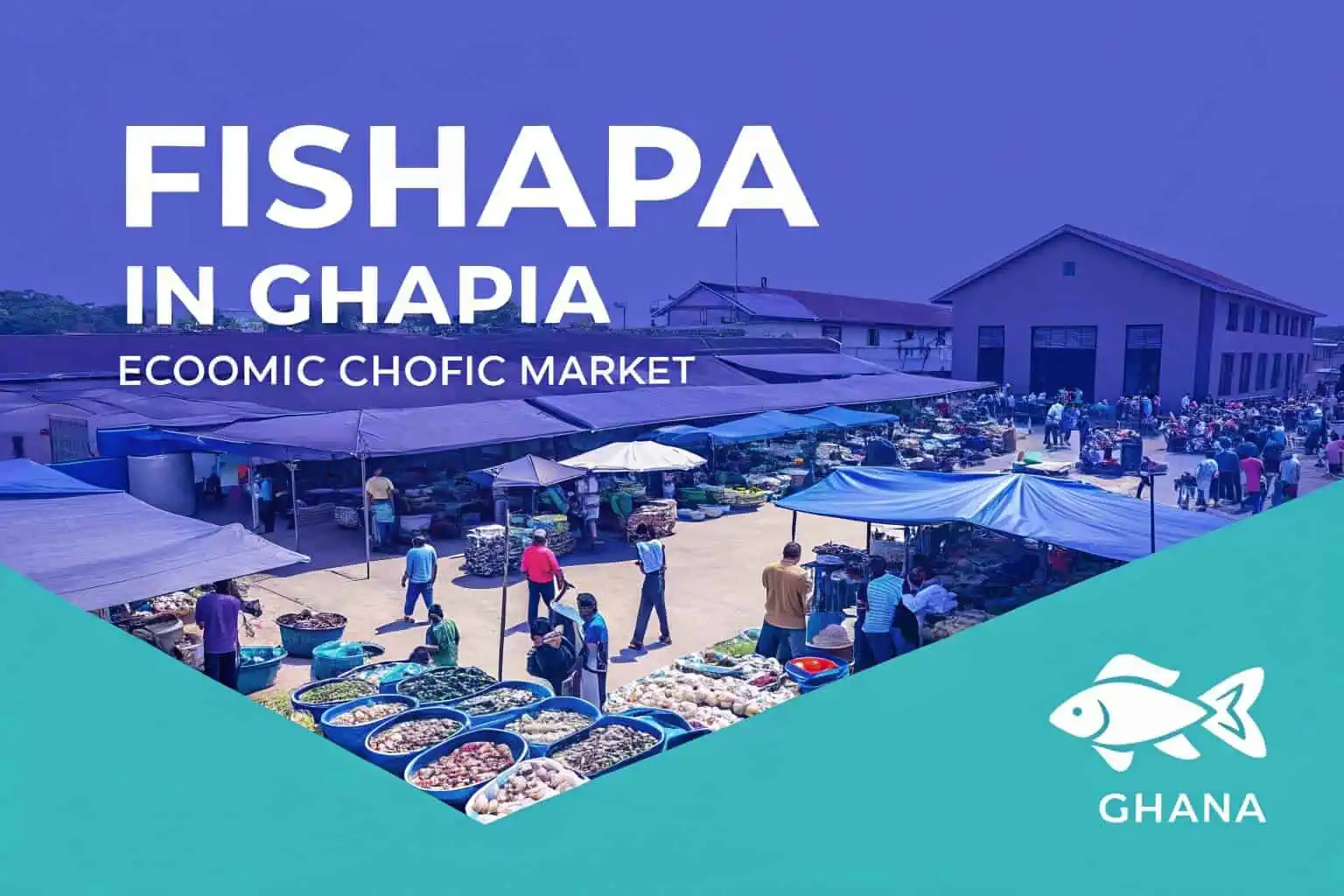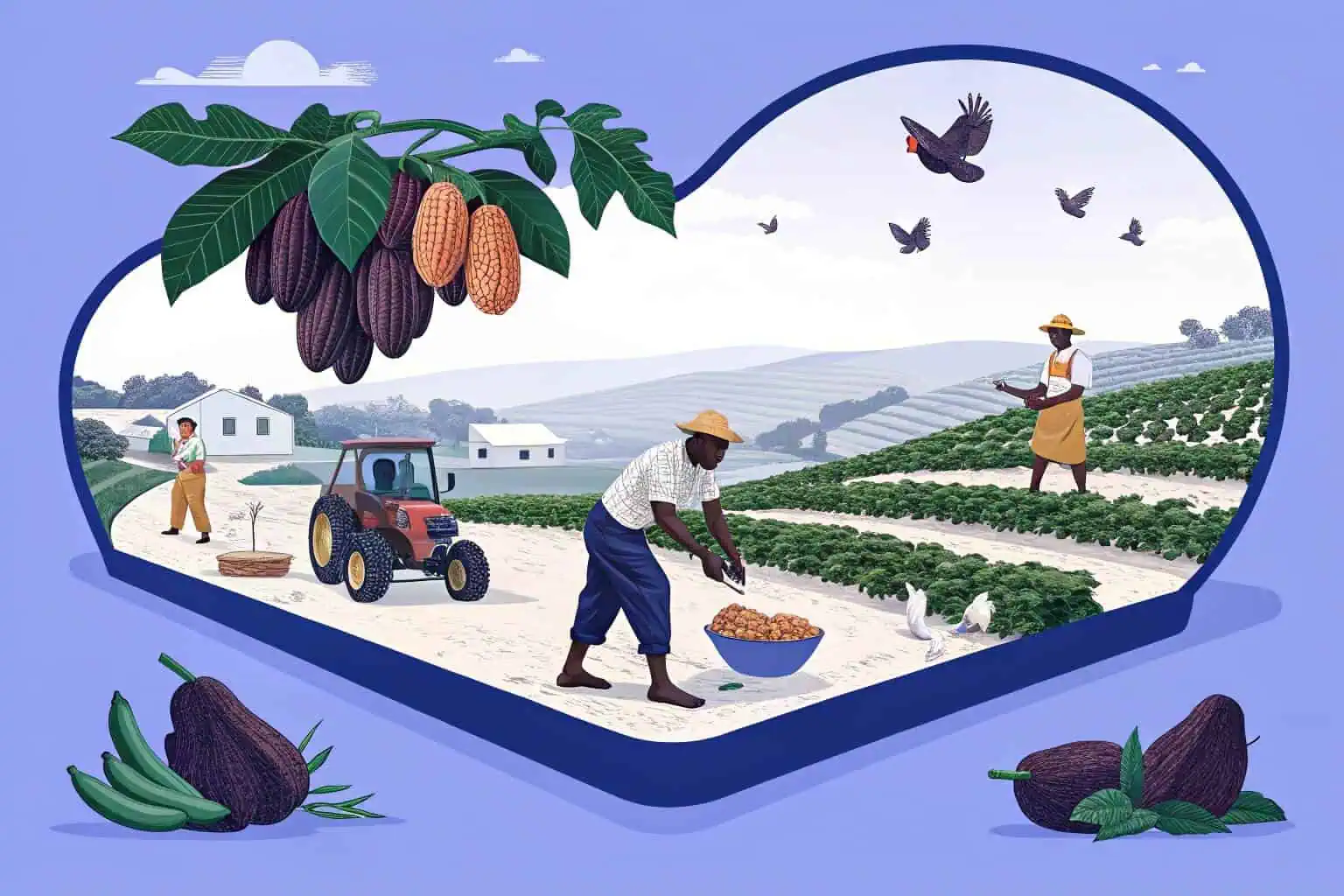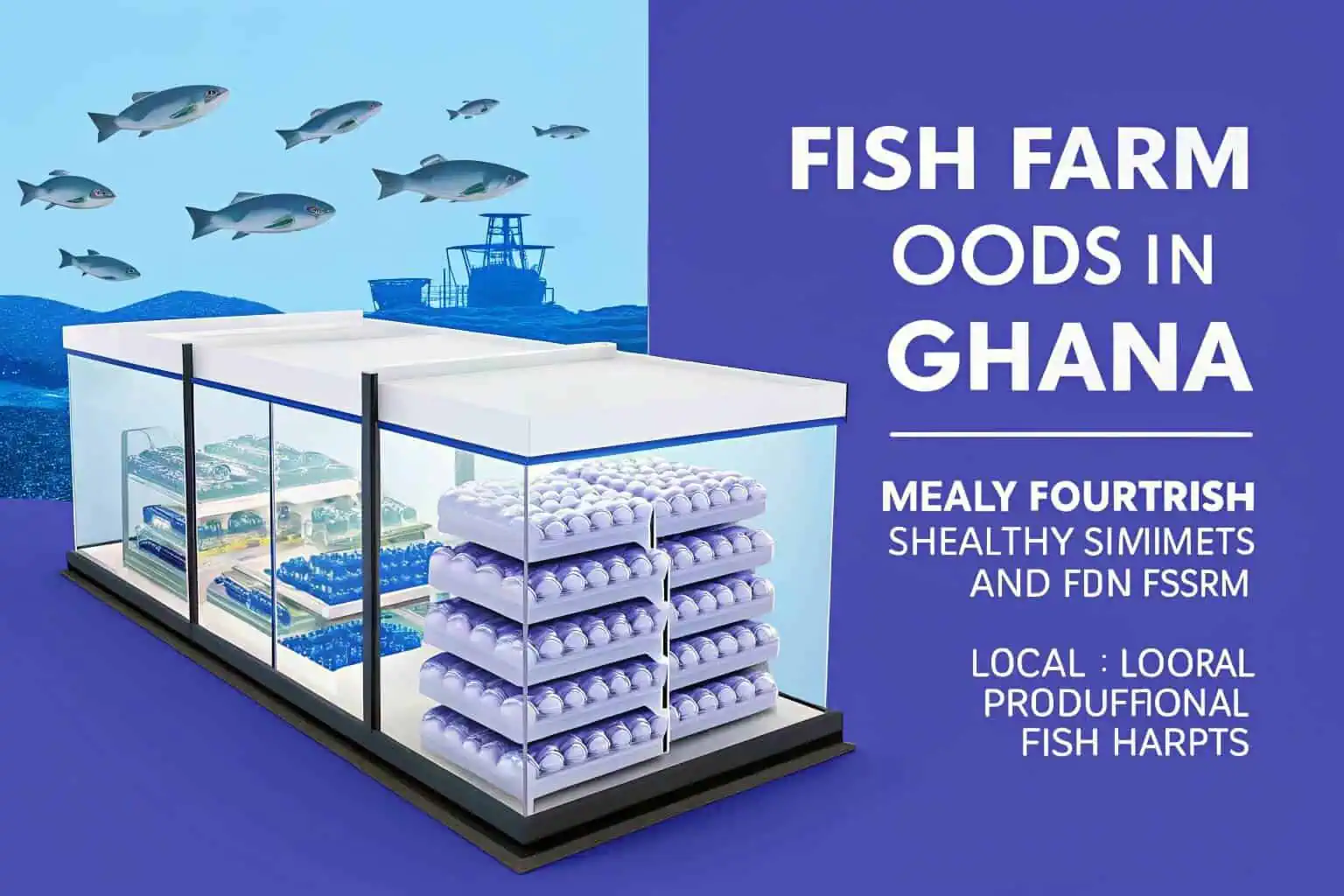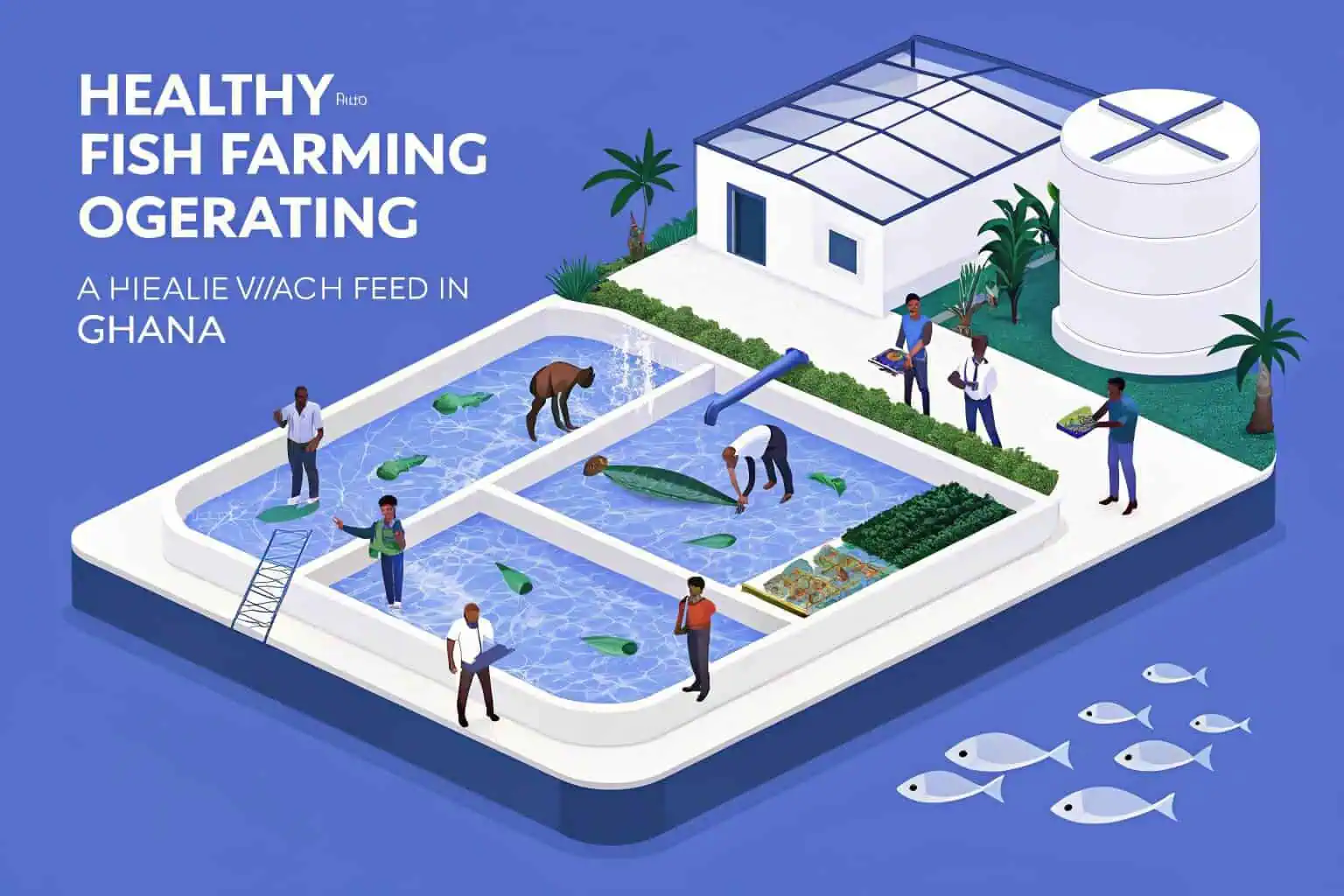How profitable is tilapia farming in Ghana?
Struggling to find a profitable venture in Ghana? Tilapia farming might be your answer, but is it truly lucrative? Let's find out.
Tilapia farming in Ghana can be very profitable. Success depends on good management, market demand, and controlling costs like feed. With the right approach, it offers good returns.

Many people ask me about making money in Ghana's agriculture. Tilapia farming often comes up. I've looked into this, and I want to share what I've learned. It's not just about throwing fish in a pond; there's more to it. Let's explore the details together.
Which farming is most profitable in Ghana?
Wondering which farming type brings the most money in Ghana? It's a big question with many answers. Let's see what the options are.
Several farming types are profitable in Ghana. Cocoa has long been a major earner. Poultry and vegetable farming also show good returns. Tilapia farming is a strong contender too.

When I think about profitable farming in Ghana, a few things come to mind. I've seen people do well with different crops and livestock. It's not always a simple choice. You have to consider the market, the initial investment, and how quickly you can see returns. For me, as someone interested in aquaculture, I naturally compare tilapia farming to other agricultural sectors. Let's break down some of the most profitable farming ventures1 in Ghana.
Comparing Top Agricultural Ventures
To understand where tilapia farming stands, it's helpful to look at other successful farming sectors in Ghana. Each has its own pros and cons.
| Farming Type | Potential Profitability | Key Considerations |
|---|---|---|
| Cocoa Farming2 | High | Long-term investment, price volatility, land intensive |
| Poultry Farming3 | Good | High demand, disease management, feed costs |
| Vegetable Farming | Moderate to High | Short cycles, irrigation needs, market access |
| Tilapia Farming4 | Good to High | Water availability, feed costs, technical knowledge |
Factors Influencing Profitability
Profitability isn't just about the type of farming. Several factors play a huge role. Good management practices5 are essential. This includes everything from selecting the right breeds or seeds to efficient use of resources. Market access is another big one. If you can't sell your produce at a good price, your profits will suffer. Government policies and support can also make a difference, offering subsidies or technical assistance. For instance, in tilapia farming, the government's support for aquaculture has been a positive factor, but challenges like feed costs, which can be 60-70% of production costs, need careful management. I believe that with the right strategy, many farming ventures can be profitable, but tilapia farming offers a relatively shorter return cycle compared to something like cocoa.
My Perspective on Tilapia's Edge
From my experience and research, tilapia farming has a competitive edge for several reasons. The demand for fish, especially tilapia, is consistently high in Ghana. It's a staple protein source. Also, the initial investment can be lower compared to other large-scale agricultural projects. With modern techniques like using Bancy's collapsible fish ponds6, even small to medium-scale farmers can start and scale their operations efficiently. These ponds are easier to set up and manage than traditional earthen ponds. The key is to combine good local conditions, like Ghana's freshwater resources, with smart farming practices.
What is the profit margin on tilapia farming?
Curious about the actual numbers? What kind of profit can you expect from tilapia farming? Let's dive into the financial side.
Profit margins in tilapia farming can range from 20% to 50%. This varies greatly based on farm size, management efficiency, and market prices. Controlling feed costs is crucial.

Understanding the profit margin is key for anyone considering tilapia farming. It's not just about revenue; it's about what you keep after all expenses. I've talked to several farmers and analyzed cost structures. The figures can be attractive, but they don't come automatically. It requires careful planning and execution7. Let's look at what influences these margins.
Key Factors Affecting Tilapia Profit Margins
Several elements directly impact how much profit you can make from tilapia.
| Factor | Impact on Margin | Details |
|---|---|---|
| Feed Costs8 | Very High | Can be 60-70% of total production cost; quality and price are critical. |
| Seed Quality9 | High | Good fingerlings lead to better growth and survival rates. |
| Water Management10 | High | Affects fish health and growth; proper filtration and aeration needed. |
| Market Price | High | Fluctuates based on supply and demand; direct market access is better. |
| Scale of Operation | Medium | Larger farms may achieve economies of scale, reducing per-unit costs. |
| Technology Used | Medium | Modern systems like RAS or efficient ponds (e.g., Bancy's collapsible fish tanks) can improve yields. |
Managing Costs for Higher Margins
From what I've seen, the most successful tilapia farmers are excellent cost managers. Feed is the biggest expense, so finding affordable, high-quality feed11 is paramount. Some farmers explore making their own feed, but this requires expertise. Efficiently managing the farm, minimizing fish mortality, and optimizing stocking density also play significant roles. Using durable and efficient equipment, like well-designed fish tanks, can also reduce long-term operational costs and improve water quality management, which indirectly boosts profits by ensuring healthier fish. I always advise new farmers to start with a detailed business plan that outlines all potential costs and revenue streams.
Realizing Potential Profits
While the potential for a 50% profit margin12 sounds great, it's important to be realistic. This often requires optimal conditions and excellent management. For many, a margin of 20-30% is more common, especially when starting out. However, even at this level, tilapia farming can provide a good income. The relatively short production cycle of tilapia (around 6-8 months) means farmers can have multiple harvests per year, which contributes to overall annual profitability. My insight is that focusing on quality, efficiency, and smart marketing can significantly push your margins towards the higher end.
Does Ghana import tilapia?
Is there enough locally produced tilapia, or does Ghana rely on imports? This is important for understanding market dynamics.
Yes, Ghana does import tilapia. Despite local production, there's still a gap between demand and supply, especially for processed or specific sizes of tilapia, which imports help fill.

It might seem surprising, given Ghana's potential for aquaculture, but imports are a reality. I've seen imported fish in the markets alongside locally farmed ones. This tells us something important about the local tilapia industry13 and the opportunities that still exist. Let's explore why Ghana imports tilapia and what it means for local farmers.
Reasons for Tilapia Imports
Several factors contribute to Ghana's reliance on tilapia imports, even with a growing local aquaculture sector.
- Demand Exceeds Local Supply: The demand for tilapia in Ghana14 is very high. It's a popular and affordable source of protein. While local production, especially from places like the Volta Lake, has increased, it often doesn't meet the total national demand, particularly in urban centers.
- Consistency and Volume for Processors: Large-scale fish processors and retailers often require a consistent supply of tilapia in specific sizes and quantities. Sometimes, the local supply chain15 can be fragmented, making it difficult for individual small-scale farmers to meet these large, regular orders. Imports can offer this consistency.
- Price Competitiveness: In some cases, imported tilapia, often from countries with highly optimized aquaculture industries, can be cheaper than locally produced fish, especially when considering economies of scale in production and processing abroad.
- Infrastructure Gaps: Challenges in local post-harvest handling, such as cold chain logistics and transportation, can lead to spoilage and inconsistencies in the supply of fresh local tilapia. This creates an opening for processed and frozen imported products.
Impact on Local Farmers
The importation of tilapia presents both challenges and opportunities for Ghanaian fish farmers. On one hand, it creates price competition. Local farmers need to be efficient to compete with potentially cheaper imports. On the other hand, the fact that Ghana imports tilapia signals a strong, unmet demand. This means there's room for local production to grow. For me, this highlights the need for local farmers to focus on quality, freshness, and niche markets that might prefer locally sourced fish. Companies like Bancy, offering efficient farming systems16 such as customizable fish tanks, can help local farmers improve their production efficiency and quality, making them more competitive.
The Path to Self-Sufficiency
I believe Ghana has the potential to become more self-sufficient in tilapia production. This requires continued investment in the aquaculture sector17, support for local farmers through access to better technology and affordable feed, and improvements in infrastructure. As a local producer, focusing on the advantages of fresh, locally grown tilapia can be a strong selling point against frozen imports. The government's initiatives to boost aquaculture are a step in the right direction. My personal feeling is that as local production becomes more efficient and organized, the reliance on imports will gradually decrease.
How profitable is fish farming in Ghana?
We've talked about tilapia, but what about fish farming in general in Ghana? Is it a good business to get into?
Fish farming in Ghana, including species like tilapia and catfish, is generally profitable. Success hinges on good management, technical skills, market access, and controlling production costs effectively.

Fish farming is a broad term, and tilapia is just one part of it, albeit a very significant one in Ghana. I've seen growing interest in catfish farming as well. The overall profitability of fish farming18 is influenced by many of the same factors we've discussed for tilapia, but it's worth looking at the bigger picture. The demand for fish is undeniable, and Ghana's natural resources offer a good foundation.
Key Drivers of Fish Farming Profitability
Several elements contribute to the success and profitability of fish farming operations in Ghana.
| Driver | Description | Impact on Profitability |
|---|---|---|
| Market Demand19 | High and growing demand for fish as a protein source. | Positive |
| Species Selection | Choosing the right species (e.g., tilapia, catfish) based on market preference and farming conditions. | Positive |
| Feed Management20 | Feed is a major cost (often 60-70%); efficient feed conversion is crucial. | Critical |
| Water Quality21 | Essential for fish health and growth; requires proper monitoring and management. | Critical |
| Technical Expertise | Knowledge of fish biology, disease prevention, and farm management. | High |
| Infrastructure | Access to reliable water sources, electricity, and good farming systems (e.g., ponds, tanks like Bancy's). | High |
| Post-Harvest Handling | Proper storage and transportation (cold chain) to maintain quality and reduce losses. | Medium to High |
Challenges in Ghanaian Fish Farming
While the potential is there, fish farmers in Ghana face several challenges. The high cost of quality fish feed is a persistent issue. Access to affordable financing22 for setting up or expanding farms can also be difficult for small-scale farmers. Disease outbreaks can lead to significant losses if not managed properly. Furthermore, inadequate infrastructure, particularly in rural areas, can affect access to markets and increase operational costs. From my perspective, addressing these challenges through better government support, private sector innovation (like Bancy's efficient and customizable fish farming solutions), and farmer cooperatives is essential for unlocking the full potential of the sector.
My Optimism for the Sector
Despite the challenges, I am optimistic about the future of fish farming in Ghana. The government has shown increased commitment to developing the aquaculture sector23. There's a growing adoption of improved farming technologies and practices. The entrepreneurial spirit of Ghanaian farmers is also a strong driving force. I've personally seen how adopting better systems, like using durable and well-designed collapsible fish tanks, can make a significant difference in yield and ease of management. The journey to maximizing profitability requires continuous learning, adaptation, and a focus on efficiency and market needs. For those willing to invest the effort and resources, fish farming offers a promising avenue for sustainable income and contribution to Ghana's food security.
Conclusion
Tilapia and general fish farming in Ghana offer good profit potential. Success requires smart management, cost control, and understanding the market. It's a promising venture for dedicated individuals.
-
This resource will highlight various profitable farming options in Ghana, offering valuable information for aspiring farmers. ↩
-
Understanding cocoa farming's dynamics can offer valuable lessons for other agricultural ventures, including tilapia farming. ↩
-
This resource will highlight essential factors in poultry farming that can be applied to improve practices in tilapia farming. ↩
-
Exploring this resource will provide insights into the profitability and challenges of tilapia farming, helping you make informed decisions. ↩
-
Understanding good management practices can significantly enhance farming profitability and sustainability. ↩
-
Learn about Bancy's innovative collapsible fish ponds and how they can revolutionize fish farming for small to medium-scale farmers. ↩
-
Effective planning and execution can significantly impact success in tilapia farming. Learn strategies to enhance your farming approach. ↩
-
Understanding feed cost management is crucial for maximizing profit in tilapia farming. Explore effective strategies to optimize your expenses. ↩
-
Seed quality is vital for tilapia growth and survival. Discover how to choose the best fingerlings for your farm's success. ↩
-
Proper water management is essential for fish health and growth. Learn about best practices to enhance your tilapia farming results. ↩
-
Exploring this resource can help you find cost-effective feed options that enhance your tilapia farming success. ↩
-
Understanding strategies to enhance profit margins can lead to better financial outcomes in your farming ventures. ↩
-
Exploring the local tilapia industry can reveal opportunities for growth and the impact of imports on local farmers. ↩
-
Understanding the demand for tilapia in Ghana can provide insights into market opportunities and consumer preferences. ↩
-
Exploring the local supply chain can reveal challenges and opportunities for small-scale farmers and processors in the tilapia market. ↩
-
Discovering efficient farming systems can help farmers optimize their operations and increase profitability. ↩
-
This link will help you understand the critical role of investment in boosting Ghana's aquaculture, leading to sustainable growth and food security. ↩
-
Discovering this information will give you a comprehensive view of the economic aspects of fish farming in Ghana, essential for potential investors. ↩
-
Understanding market demand can help you capitalize on growth opportunities in the fish farming industry. ↩
-
Efficient feed management is crucial for reducing costs and maximizing profits in aquaculture. ↩
-
Maintaining water quality is essential for fish growth and overall farm success, impacting profitability significantly. ↩
-
Exploring financing options can empower farmers to expand their operations and overcome financial barriers. ↩
-
Learn about the advancements in Ghana's aquaculture sector and the government's role in its growth. ↩